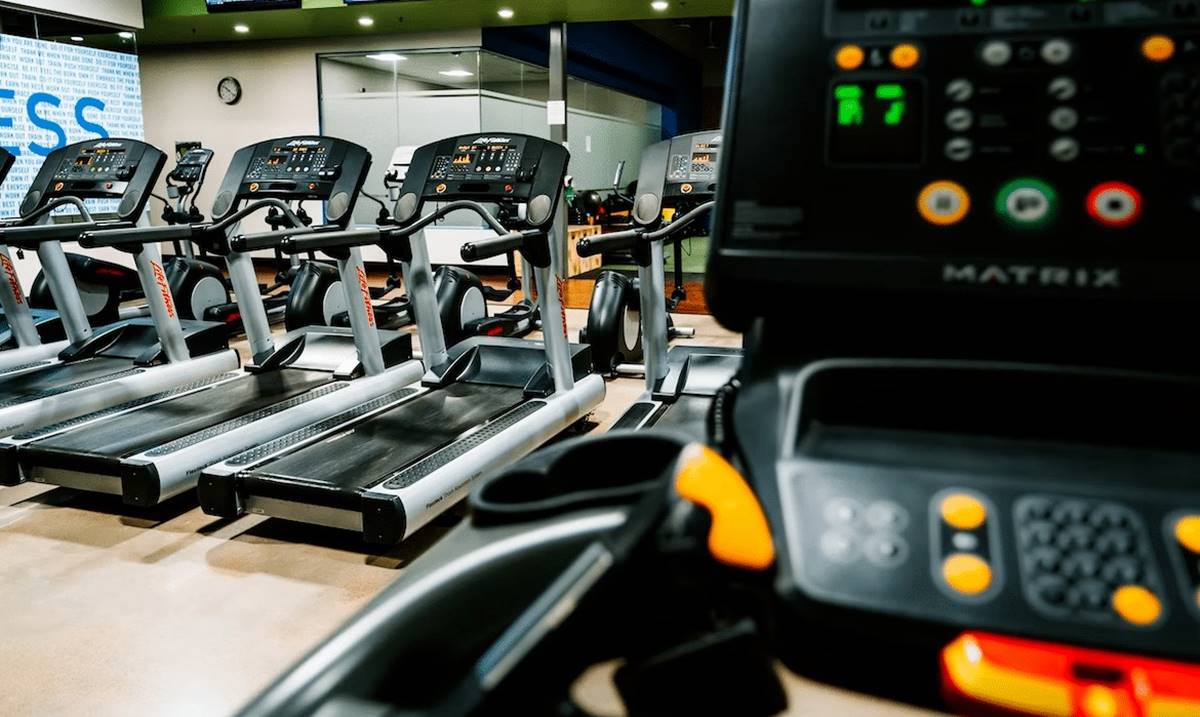

Featured
How Many Calories Burned Jogging 2 Miles
Modified: January 2, 2024
Discover how many calories you can burn by jogging 2 miles. Featured workout routine for weight loss and fitness.
Introduction
Jogging is a popular form of exercise that offers numerous health benefits, including weight loss and improved cardiovascular fitness. Not only does jogging help burn calories, but it also provides mental clarity and stress relief.
Have you ever wondered how many calories you burn while jogging 2 miles? The answer to this question depends on various factors such as your weight, running speed, and terrain. In this article, we will delve into the world of calorie burn, providing valuable insights into the number of calories you can expect to burn during a 2-mile jog.
Before we dive into the specifics, it’s important to understand that jogging is an excellent way to burn calories and maintain a healthy weight. In fact, it is often recommended by fitness experts and healthcare professionals as a foundational exercise for overall well-being.
As with any form of exercise, the number of calories burned while jogging depends on several key factors. These factors include:
- Weight: Your weight plays a significant role in calorie burn. Generally, the more you weigh, the more calories you will burn during physical activity.
- Running Speed: The intensity of your jog, determined by your running speed, affects the number of calories burned. The faster you run, the more calories you will burn.
- Terrain: The type of terrain you are running on can impact calorie burn. Running on flat ground versus uphill terrain, for example, can yield different calorie burn results.
- Gender: Gender can also influence calorie burn. Men typically burn more calories than women due to their higher average muscle mass.
Now that we have an understanding of the factors affecting calorie burn, let’s explore the average calories burned while jogging 2 miles.
Factors Affecting Calorie Burn
When it comes to jogging, there are several key factors that contribute to the number of calories burned. Understanding these factors can help you gauge your calorie burn and make adjustments to your routine if needed.
1. Weight: As mentioned earlier, your weight plays a significant role in calorie burn. This is because more weight requires more energy to be expended during physical activity. So, a person who weighs more will burn more calories while jogging compared to a lighter individual.
2. Running Speed: The pace at which you jog directly affects the number of calories you burn. Running at a faster speed requires more energy, resulting in a higher calorie burn. On the other hand, jogging at a slower speed will still burn calories, but at a lower rate.
3. Terrain: The type of terrain you run on can impact your calorie burn. Running uphill or on rough terrain requires more effort and engaging different muscles, which leads to a higher calorie burn. Conversely, jogging on a flat surface will require less energy expenditure.
4. Gender: Gender can also influence calorie burn. Men generally burn more calories while jogging compared to women due to their higher average muscle mass. This is because muscle tissue requires more energy to maintain, resulting in a higher metabolic rate and calorie burn.
5. Age: Age can also affect calorie burn. As we age, our metabolism typically slows down, resulting in a slightly lower calorie burn compared to when we were younger. However, this difference is relatively minor.
6. Fitness Level: Your fitness level plays a role in calorie burn as well. A more fit individual will typically have a higher cardiovascular efficiency and therefore burn calories more efficiently while jogging.
It’s important to note that these factors interact with each other and vary from person to person. This means that there is no one-size-fits-all approach to calculating calorie burn during jogging. However, by understanding these factors, you can gain a better understanding of your own calorie burn and make adjustments to your jogging routine as needed.
Average Calories Burned Jogging
When it comes to estimating the average calories burned while jogging, it’s important to consider the factors mentioned earlier. While the calorie burn varies from person to person, we can provide a general estimate based on an average weight and pace.
On average, a person weighing around 150 pounds can expect to burn approximately 150-200 calories during a 2-mile jog. This estimate is based on a moderate running speed of 5-6 miles per hour on flat terrain.
Keep in mind that this is just an estimate, as individual calorie burn can vary. It’s helpful to use online calorie calculators or fitness tracking devices that take into account your personal factors, such as weight, pace, and terrain, to get a more accurate estimate of your calorie burn.
Furthermore, it’s worth noting that the intensity of your jogging session can significantly impact calorie burn. High-intensity interval training (HIIT) sessions, where you alternate between periods of intense running and recovery, can result in a higher calorie burn compared to a steady-paced jog.
Additionally, if you increase your running speed, run on hilly terrains, or carry additional weight (through weighted vests or backpacks), you can further boost your calorie burn. However, it’s important to listen to your body and gradually increase intensity or resistance to avoid overexertion and injuries.
Remember, these numbers are just estimates and can vary based on individual factors. It’s always a good idea to consult with a fitness professional or use reliable fitness trackers to get a more accurate measure of your personal calorie burn during jogging.
Calculating Calorie Burn
While estimating the average calories burned during a 2-mile jog is helpful, you may want to calculate a more precise number based on your individual factors. To do this, you can use a formula to estimate your calorie burn.
One commonly used formula for calculating calorie burn is the MET (Metabolic Equivalent of Task) method. This method assigns a MET value to different activities, including jogging, based on the energy expenditure required.
The MET value represents the ratio of the rate of energy expended during an activity to the rate of energy expended at rest. For example, a MET value of 4 means that you are burning calories four times faster than you would be at rest.
To calculate your calorie burn during a 2-mile jog using the MET method, you can follow these steps:
- Find the MET value for jogging. This can vary based on your running speed. On average, jogging has a MET value of 8.3.
- Determine your body weight in kilograms. To convert pounds to kilograms, divide your weight in pounds by 2.2.
- Calculate the energy expenditure in calories per minute using the following formula: MET value × body weight (in kg) ÷ 200.
- Multiply the energy expenditure per minute by the duration of your jog in minutes (2 miles is approximately 20-25 minutes, depending on your pace).
- The result will be an estimate of the total number of calories burned during your 2-mile jog.
Keep in mind that this formula provides a rough estimate and individual results may vary. It’s always a good idea to use it as a starting point and adjust based on your personal experience and energy expenditure.
Using fitness tracking devices or smartphone apps can also provide you with more accurate real-time data on your calorie burn during jogging, as these devices take into account various factors such as heart rate, speed, and distance covered.
Tips to Maximize Calorie Burn While Jogging
If you’re looking to maximize your calorie burn during jogging, here are some tips to help you get the most out of your workout:
- Vary Your Intensity: Incorporate interval training into your jogging routine. Alternate between periods of high-intensity sprints and recovery periods of lower intensity. This can help elevate your heart rate and increase calorie burn.
- Incorporate Hills: Find routes with inclines or hills to challenge yourself. Running uphill requires more effort, engaging different muscle groups and resulting in a higher calorie burn.
- Add Resistance: Consider incorporating resistance training into your jogging routine. You can wear a weighted vest or carry light hand weights to increase the intensity and calorie burn.
- Increase Pace: Gradually increase your running speed to challenge your body and burn more calories. Push yourself to maintain a faster pace during your jogging sessions.
- Practice Proper Form: Focus on maintaining good running form to engage your muscles efficiently. Keep your posture upright, land lightly on your feet, and swing your arms naturally. Engaging the correct muscles will optimize your calorie burn.
- Extend the Distance: Gradually increase the distance of your jogging sessions over time. The longer you jog, the more calories you will burn. However, be mindful of any limitations and avoid overexertion.
- Mix Up Your Routine: Avoid getting stuck in a rut by adding variety to your jogging routine. Explore different routes, try different terrains, or join a running group to keep yourself motivated and engaged.
- Stay Hydrated: Proper hydration is essential for optimizing performance and calorie burn. Drink water before, during, and after your jogging session to maintain optimal hydration levels.
Remember to listen to your body and adjust the intensity and duration of your jogging sessions based on your fitness level and limitations. It’s also important to consult with a healthcare professional or fitness trainer if you have any medical conditions or concerns.
By implementing these tips and customizing your jogging routine to suit your needs, you can maximize your calorie burn and achieve your fitness goals more effectively.
Conclusion
Jogging is an excellent form of exercise that offers numerous health benefits, including calorie burn, weight loss, and improved cardiovascular fitness. While the number of calories burned during a 2-mile jog can vary from person to person, understanding the factors influencing calorie burn can help you estimate a more accurate number.
Factors such as weight, running speed, terrain, gender, age, and fitness level all play a role in determining calorie burn. Making adjustments to these factors, such as increasing running speed, incorporating interval training, running on hilly terrains, and maintaining proper running form, can help maximize your calorie burn while jogging.
Calculating calorie burn using formulas like the MET method can provide a rough estimate, but it’s important to remember that individual results may vary. Utilizing fitness tracking devices or smartphone apps can give you real-time data tailored to your personal factors.
Ultimately, the most effective way to optimize calorie burn while jogging is to listen to your body, set realistic goals, and make gradual improvements to your routine. Stay consistent, stay hydrated, and always prioritize your overall well-being.
So, lace up your running shoes, find a scenic route, and get ready to burn those calories while enjoying the great outdoors. Happy jogging!








